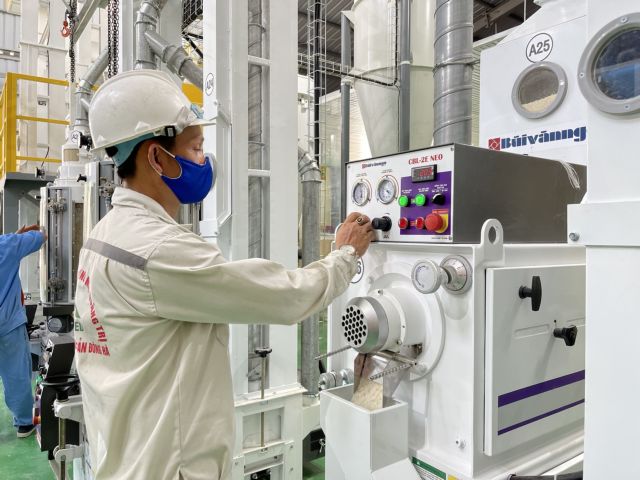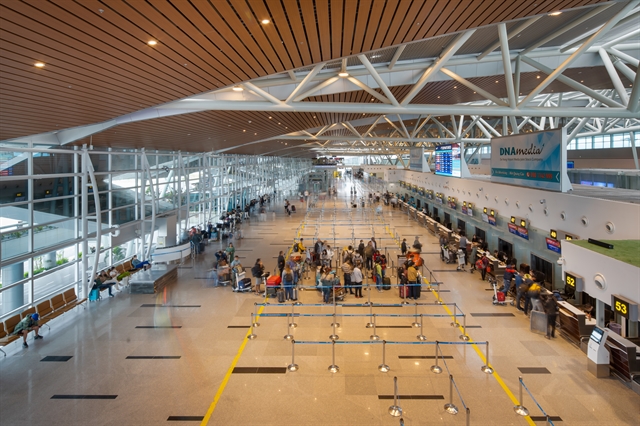 Society
Society

 |
| Processing organic rice at Quảng Trị Commercial Company in Quảng Trị Province. — VNA/VNS Photo Thanh Thủy |
HÀ NỘI — The National Agricultural Extension Centre (NAEC) has initiated several organic rice production projects in localities, which are gaining more favour for their clean products, lower production costs, and contributions to land improvement as well as enhanced grain value.
The organic rice production model, coupled with product consumption links, has been deployed in the north-central provinces of Nghệ An, Hà Tĩnh, and Quảng Trị, spanning an area of 240 hectares.
Yields have hit 6.38 tonnes per hectare, a 10 per cent increase in efficiency compared to conventional methods. By employing organic production processes and using biologically-based products, safe rice is produced, leading to a 20 per cent increase in profits for farmers compared to traditional rice cultivation.
One of the active participants in organic rice production, the Quế Lâm Group has expanded this model nationwide. Tôn Thất Thạnh, a representative of the enterprise, has elaborated its no-chemicals production began in the central province of Thừa Thiên-Huế.
Now, the group is capable of cultivating 200 hectares of organic paddy per crop in the locality. It has also invited cooperatives and farmers from various regions to visit and learn from its experience, aiming to replicate the practice on a broader scale. By now, Quế Lâm has produced organic rice on around 1,000 hectares in such provinces as Hà Tĩnh in the central region, Vĩnh Phúc and Thái Nguyên in the north, and Đồng Tháp and Đồng Nai in the south.
Assessments showed that organic rice farming in the central region not only generated clean and environmentally-friendly products thanks to the avoidance of chemical usage but also increased average profits by VNĐ1 million (US$44.66) per "sào" (a traditional Vietnamese unit of land measurement, one sào is equivalent to roughly 500 square metres for the region) for local residents.
However, transitioning to organic rice cultivation didn't immediately gain the support of farmers.
Nguyễn Hữu Ngọc, Deputy Director of the Hà Tĩnh Agricultural Extension Centre, said farmers had been accustomed to using chemical fertilisers and pesticides for a long time, and switching to organic standards could bring about challenges. They also needed access to reputable suppliers of organic biological fertilisers.
The price of organic rice in the market was not significantly higher than conventionally produced rice, so farmers might not be willing to adopt the new practice.
NAEC Director Lê Quốc Thanh noted that Việt Nam was moving towards green and clean agriculture. Therefore, producing rice using organic standards would be one of the prominent solutions. To make this a reality, he suggested localities raise farmers’ awareness on the matter and establish mechanisms to encourage the participation of enterprises for effective and widespread implementation.
“Enterprises can help farmers access scientific techniques, inputs, and ensure market outlets," he said.
"If enterprises collaborate with farmers, it will undoubtedly boost their confidence in production and ensure the quality of the final product."
According to the Ministry of Agriculture and Rural Development (MARD)’s Department of Quality, Processing and Market Development, 62 localities nationwide are participating in organic farming or are in the process of transitioning to the practice. The total area of organic arable land now exceeds 175,000 hectares, including 63,536 hectares for crops. — VNS




